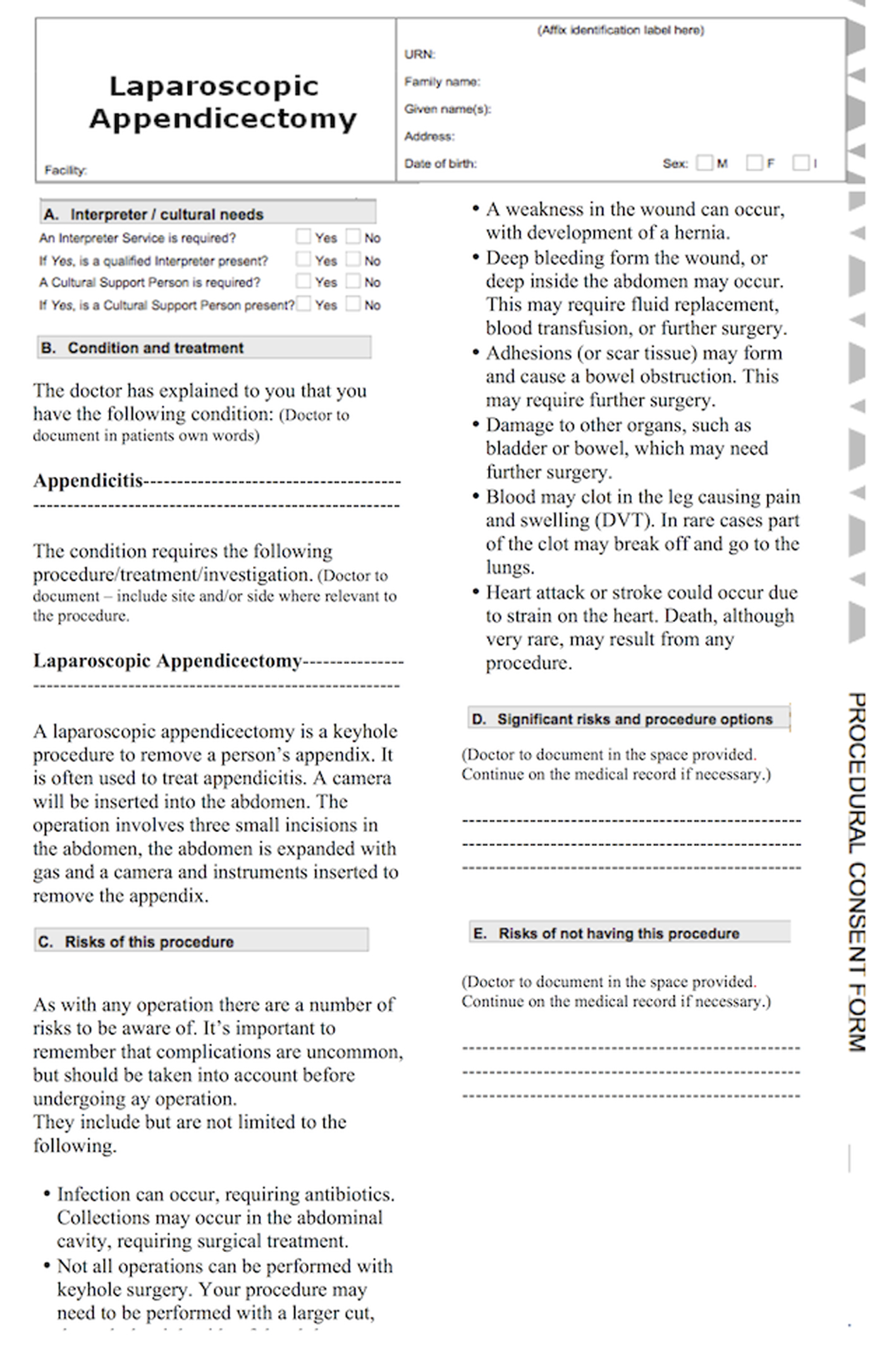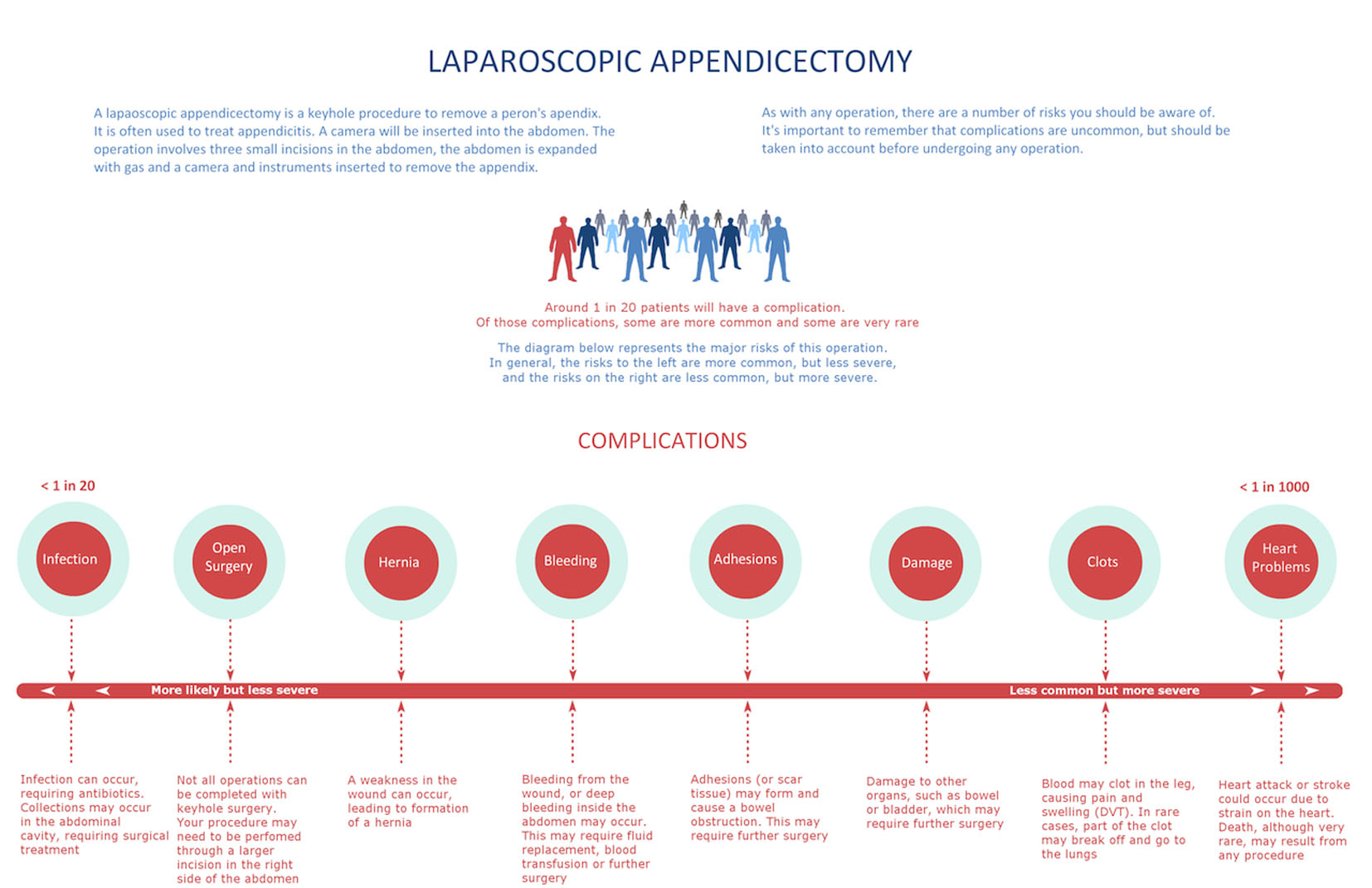
Figure 1. Standard institutional consent form.
| Journal of Current Surgery, ISSN 1927-1298 print, 1927-1301 online, Open Access |
| Article copyright, the authors; Journal compilation copyright, J Curr Surg and Elmer Press Inc |
| Journal website http://www.currentsurgery.org |
Original Article
Volume 5, Number 2-3, September 2015, pages 160-164
Redesigning Informed Consent: Enhancing Risk Communication Through a Novel Risk Visualization Tool
Figures


Tables
| Q1 | What are the risks or potential adverse events that can occur when undergoing a laparoscopic appendicectomy? |
| Q2 | Which of these adverse events are the most likely to occur? |
| Q3 | Which of these adverse events are the most serious? |
| a. RVT | b. Control |
|---|---|
| Q1. The use of a “risk visualization tool” made learning about the procedure and its risks easier to understand. | Q1. The informed consent process made learning about the procedure and its risks easy to understand. |
| Q2. The use of a “risk visualization tool” made learning about the procedure and its risks easier to remember. | Q2. The informed consent process made learning about the procedure and its risks easier to remember. |
| Q3. If you were to undergo a laparoscopic appendicectomy, the use of a “risk visualization tool” would make it easier to understand and remember the risks of having the procedure. | Q3. If you were to undergo a laparoscopic appendicectomy, the use of an extra visual information such as this (show RVT to participant) would make it easier to understand and remember the risks of having the procedure. |